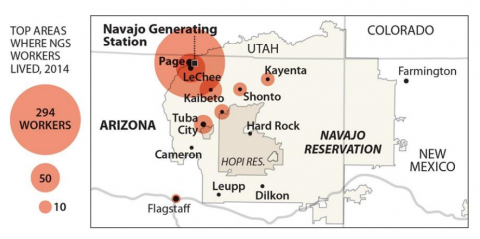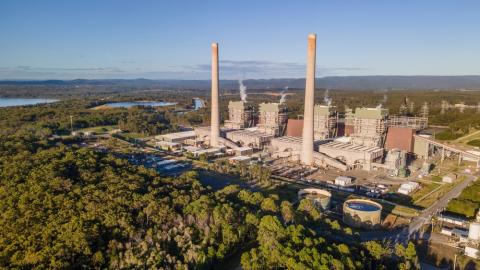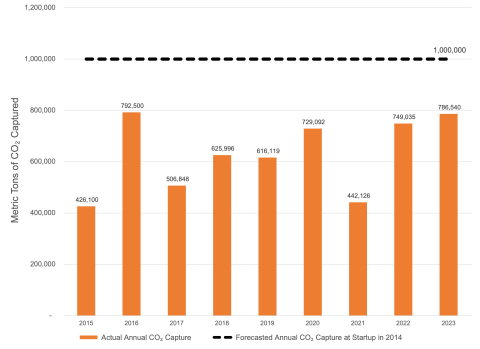Long-term opportunity for Navajo nation in post-coal reclamation economy
Download Full Report
Key Findings
Navajo Generating Station and the Kayenta mine have been crucial components of the economy of northeastern Arizona and neighboring parts of New Mexico and Utah since the early 1970s.
As recently as 2014, the Kayenta Mine, which is owned by Peabody Energy, logged a $60.8 million payroll. That figure included pay ($34.6 million) and benefits ($26.2 million), and pencilled out wage-and salary-wise to about $78,000 per year per employee, an average most likely inflated by executive and managerial salaries.
The economic feasibility of NGS in fact is not at issue. The question, rather, is how to responsibly manage a transition toward a more diversified regional economy that can function without NGS.
Executive Summary
Imminent closure of the coal-fired Navajo Generating Station (NGS) and its companion Kayenta Mine are portrayed sometimes as economically apocalyptic events that will drive the irreplaceable loss of hundreds of jobs that support households and businesses over thousands of square miles.
Often overlooked in these discussions, however, is the likelihood that reclamation work at the mine and the power plant will take years to complete and will require hundreds of skilled employees, many of whom work now at NGS or Kayenta Mine.

The map above, based on permit filings, shows the payroll reach of NGS and, by extension, the jobs base for a post-coal reclamation economy around the plan. The mine, which is close to the town of Kayenta, has a jobs-footprint distribution similar to NGS’s. Cleanup work at NGS and Kayenta will take at least five years to complete, by federal government estimates, activity that can create a viable bridge toward a more diversified regional economic base.
A successful transition following closure of the power plant and the mine complex will require that the responsible parties be held accountable for their cleanup obligations. Public pressure may be required for proper reclamation of Kayenta Mine, which is owned by Peabody Energy, part of an industry that is not especially well known for its reclamation track record.
It will require also that other opportunities be exploited around the post-coal repurposing of NGS infrastructure, which can be retooled for utility-scale solar power generation of the type already being developed on Navajo lands and for which there is a growing market.
The Navajo Tribal Utility Authority just this fall announced an aggressive expansion, into utility-scale solar, and recent record-low bids for utility-scale solar elsewhere in Arizona and neighboring Nevada indicate a solar market in ascendance.
This report describes the potential for elements of a post-coal cleanup economy based on the following:
- An emerging body of research that suggests substantial economic opportunity in power plant and coal mine cleanup;
- Federal assessments of long-term reclamation work associated with the Kayenta Mine after its closure;
- Projections for NGS land and water remediation requirements that will take perhaps a generation to complete;
- A growing realization of the need for responsible transition policy that will support a post-coal economy.
Press release: IEEFA Arizona: ‘Post-coal reclamation economy’ seen after closure of Navajo Generating Station and Kayenta Mine
Please view full report PDF for references and sources.












